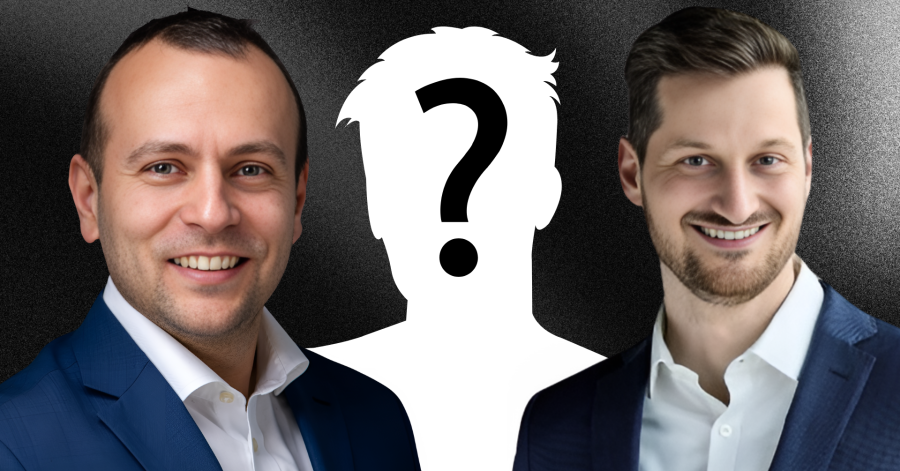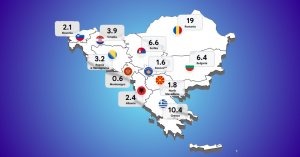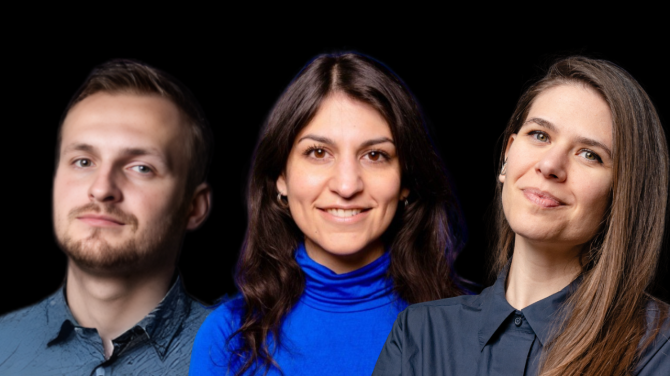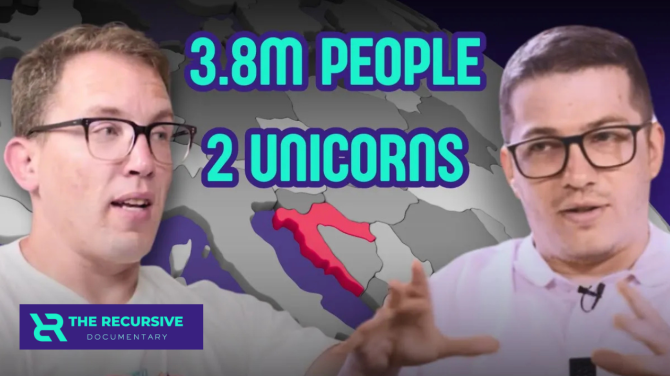Investing has become an integral part of the financial mindset in Central and Eastern Europe, with more (high-net-worth individuals) HNWIs from CEE actively putting their money to work across different asset classes. While institutional investors—such as European bodies, governmental funds, and banks—continue to play a major role, individual investors are increasingly shaping the market with their investments.
In this article—and throughout the Money in Motion report—we explore how individual investors, especially those with a net worth of over $1M approach investment opportunities. While we’re focusing on a few key asset classes here, this is just a small part of the bigger picture. We’ll continue diving into different investment strategies in future articles and in the full Money in Motion report.
To get a firsthand perspective, we spoke with three investors who each take a unique approach: Dragos Darabut, Senior Investment Manager at Agista, specializing in private equity, Martin Cakl, Manager at Naše ČESKO, who follows a hybrid strategy and a Romanian private investor with a highly diversified portfolio.
Their insights provide a deeper look at how investors navigate risk, opportunity, and market trends.
Private equity: not that risky, not that safe
Private equity remains an attractive asset class for HNWIs looking for high returns in private businesses. Unlike stocks, PE investments involve buying stakes in companies, helping them scale, and eventually selling for a profit.
Dragos Darabut, Senior Investment Manager at Agista, explains how his fund takes a structured approach to PE investing. “Our sweet spot is €3-5M per investment,” he says, noting that Agista primarily targets IT and healthcare companies. The fund operates under two main models: either helping businesses expand within three to five years or acquiring smaller companies to consolidate fragmented industries.
For HNWIs investing in private equity, risk is always a consideration.
“When assessing the risks of private equity investments, it depends on the comparison: relative to venture capital, private equity is slightly less risky; compared to publicly traded companies, which carry higher risk,” Darabut says.
However, he adds that as businesses scale, their risk profile improves.
Many of Agista’s investors are entrepreneurs themselves, which influences their approach to private equity.
“Our LPs—entrepreneurs with their own businesses—do not perceive private equity as highly risky and are comfortable with such investments,” he notes.
They see PE as a strategic diversification tool, often alongside real estate, bonds, and public equities. The average ticket of Agista’s LPs is starting at €1M and going up to €5M.
Naše ČESKO takes a slightly different approach, combining private equity with venture capital and public equities.
Their investment strategy is closely tied to the Czech market. “Our geographical focus is the Czech Republic, as it makes more sense to be close to the companies we invest in,” Cakl explains.
“We invest significantly in industrial companies because of the opportunities they offer.”
When it comes to investor participation, Naše ČESKO has a broader base than Agista.
“We raise money from Czech retail investors and HNWIs based on specific criteria,” Cakl says. “The minimum ticket is €50K, and it shouldn’t exceed 10% of an investor’s liquid net worth.”
They collaborate with J&T Bank’s Private Division and external wealth managers, ensuring a steady inflow of capital from private sources.
Venture capital: the high-risk, high-reward game
While private equity focuses on scaling established, easier-to-understand businesses, venture capital is about betting on emerging startups with big potential. It’s riskier, but the rewards can be massive for those who get it right.
The Romanian private investor we interviewed sees venture capital as an exciting part of his portfolio. “I invest in several asset classes, including real estate, private equity funds, venture capital funds, and direct equity in companies,” he says.
He has backed multiple Romanian startups, including Druid AI, FlowX, Finqware, FameUp, SeedBlink and MeetGeek, and is an LP in several VC funds like Earlybird Venture Capital, Underline VC and Early Game Ventures.
Unlike private equity, where there’s already a track record to analyze, venture capital requires a lot of faith in founders and their vision.
“I choose investments based on their potential, which is why I believe some startups have great promise. The results will become clear in a few years.”
Dragos Darabut, who primarily focuses on private equity, also acknowledges the difficulty in assessing startups. “It’s more challenging to assess a startup compared to a more mature company, as predicting a startup’s likelihood of success is more difficult,” he says. This is why many HNWIs approach VC cautiously, often making smaller bets compared to their private equity investments.
Naše ČESKO, which invests across multiple asset classes, includes venture capital in its portfolio, but Cakl notes that many of their investors are hesitant about it.
“Many of our typical clients are not fans of venture capital,” he admits. “Since they are 50+ years old and already wealthy, they tend to avoid adding excessive risk to their portfolios.”
However, as more investors gain exposure to VC through diversified funds, they are slowly becoming more open to the idea.
Public markets: liquidity and (maybe) stability
Public equities remain an essential part of an HNWI’s portfolio, providing liquidity that private investments lack. While PE and VC offer high returns, they also require longer lock-in periods. That’s why many investors maintain a portion of their wealth in publicly traded stocks.
Naše ČESKO integrates public equities into its strategy to maintain liquidity. “For liquidity purposes, we also hold public equities. By combining multiple asset classes in our portfolio—with both advantages and disadvantages—we create a profitable mix,” Cakl says.
One of the biggest advantages of public equities is flexibility. Unlike private equity or VC, where money is tied up for a few years, Naše ČESKO offers investors the ability to withdraw their returns more frequently.
“Our LPs are not actively involved in investment decisions. They can withdraw their returns on a monthly basis, and our open structure allows them to enter or exit at any time.”
This structure particularly appeals to HNWIs who want some exposure to private markets but still value liquidity.
How HNWIs balance their portfolios
There’s no one-size-fits-all approach to investing, but most HNWIs follow a few key principles:
- Diversification is essential – Balancing private equity, venture capital, and public markets helps manage risk and maximize returns.
- Private equity for long-term growth – PE offers strong returns and direct involvement in clearer-defined businesses, where the future is more foreseeable.
- Venture Capital for high-risk, high-reward bets – VC is for investors willing to take risks for potentially massive upside.
- Public markets for liquidity – Stocks provide the flexibility to adjust investments quickly when needed.
As the investment landscape in CEE evolves, HNWIs are becoming more strategic about how they allocate their wealth. Some prefer the structured, hands-on nature of private equity, while others embrace the risk and excitement of venture capital. Public markets remain a cornerstone, ensuring liquidity and stability in an ever-changing economy.
With more investment opportunities emerging across the region, HNWIs will continue to play a crucial role in shaping the private market ecosystem. The key takeaway? A balanced portfolio that blends private and public investments is often the best way to navigate risk while maximizing returns.
This article is part of the Money in Motion report, where we explore how high-net-worth individuals in CEE invest across various asset classes. The project is sponsored by Roca Investments and Vertik Group and supported by FBN Bulgaria, FBN Hungary, Endeavor Greece, Endeavor Poland, Endeavor Bulgaria, VC Leaders, ROPEA, Bulgarian Angels Club, BAC, BVCA, BBCC, CVCA, 0100 Conferences, CEE Wealth Summit, Money Motion and Growceanu.









